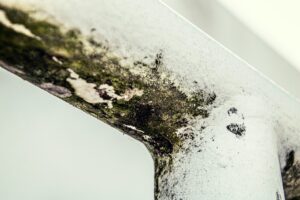We often take our household appliances and other items for granted. Many things you use every day could impact your home’s air quality — and therefore your health. When you know what causes unhealthy air, you can make better choices for yourself, your household, and the environment. Here are nine ways your home impacts your air quality.
1. Cleaners
While we use cleaning products to make our homes cleaner and safer, they can actually make your air more dangerous. The chemicals released through cleaning supplies can cause allergic reactions, headaches, and chronic respiratory problems.
These products don’t only exacerbate existing illnesses — some research connects high levels of exposure to workplace-related asthma. A product’s volatile organic compounds may cause smog, severely impacting an area’s residents. They can also leak into waterways, harming aquatic populations.
2. Cat Litter
Cats make excellent pets, but their litter can harm your health. If you aren’t vigilant about cleaning the litterbox regularly, the feces and urine can release dangerous amounts of ammonia. High ammonia levels can burn your skin, mouth, lungs, eyes, and throat and cause severe breathing issues. If feces is dried, it can release bacteria, which is the cause of toxoplasmosis — a condition that could harm an unborn baby. Common litters are not biodegradable, sitting in landfills and releasing carbon into the air.
3. Gas Stoves

A gas stove uses natural gas to ignite a flame, but research shows that small amounts of unburned gas can leak from your stove, releasing the carcinogen benzene and nitrogen dioxide. Cooking itself can release a small amount of natural gas, which scientists used to think was safe. However, newer research shows that they can have devastating effects. A recent study connected 12% of childhood asthma cases to nitrogen dioxide from these stoves. The risk is so severe that the government is debating whether to ban them. Though the initial suggestion fell through, several experts have expressed their concerns and suggested purchasing electric stoves instead.
4. Carpeting
Carpet may feel comfortable on your feet, but it can act as a sponge for dust, dirt, and allergens. Any toxic gases in the air can land on your carpet, where they stay until they’re released through movement. The larger a carpeted area is, the harder it is to prevent contamination. Kids and pets are more likely to experience adverse health effects, like headaches and respiratory symptoms. The production and disposal of carpeting also release emissions into the atmosphere. These processes contribute to climate change and release harmful substances within surrounding areas.
5. Particulate Matter
Dust, dirt, and smoke are all part of the particulate matter floating through your home’s air. Breathing in these particles can irritate the alveoli in your lungs, wreaking havoc. When entering your lungs, they can cause pneumonia, stroke, and heart disease. Lung cancer and other respiratory conditions like asthma and chronic obstructive pulmonary disease (COPD). Inorganic spores can release carbon into the atmosphere, contributing to climate change. They also contribute to acid rain, can deplete soil nutrients, cause water to go acidic, and eliminate diversity in ecosystems.
6. Formaldehyde
Formaldehyde isn’t just in gas stoves. It’s everywhere. Wood and paper products are just some of the materials in your home that can release volatile chemicals into your air. Temperature and humidity play a part in its release. Though you can find it outdoors, formaldehyde levels are much higher inside. If you smoke indoors, the formaldehyde level rises significantly. Burning paper and wood in a fireplace also contributes to the problem. In the atmosphere, formaldehyde can sicken animals and hurt the environment. When it breaks down in the atmosphere, it contributes to acid rain.
7. Mold

Basements are notorious for producing mold, but the condition can happen in any dark or damp area of your home. Though some mold is naturally in the air, concentrated spores in your home are unhealthy. Mold spores in the air can trigger asthma symptoms and allergies. Even before the mold is visible, anyone can experience respiratory, throat, and eye irritation. Leaky pipes, exterior humidity, and poor bathroom or kitchen exhaust. Air conditioners, drip fans, and refrigerators coils can also contribute to mold production by releasing moisture.
8. Dust Mites
Every home experiences dust from time to time but small dust mites can lead to severe health issues. The mites are tiny pests that can trigger various symptoms, including sinus pain, congestion, cough, and severe asthma attacks. They are attracted to carpet and upholstered furniture. High humidity also attracts them to your home. Though the concentration of mites in the environment varies by location, they are one of the largest contributors to asthma symptoms around the world.
9. Building Products
Though most of the world is familiar with lead paint dangers, other old building materials can impact indoor air quality. Old drywall and tiles may contain asbestos, which can cause cancer and other debilitating conditions. Though they may sit sedentarily, these harmful chemicals release through renovation and disintegration of the materials. Despite some debate, some experts believe that plasticizers in flooring and pipes also have adverse health impacts.
Improving Indoor Air Quality

While it’s difficult to avoid things like cooking and cleaning there are ways to improve your air quality. Utilizing efficient energy sources can reduce harm to you and the environment. Natural and biodegradable chemicals also play a role in reducing illness and contamination. Making sustainable material choices also helps, such as hardwood or laminate flooring instead of carpet. Keeping up with maintenance for your appliances can also go a long way. Using air purifiers and monitoring devices can help you keep your home in check until you can make the necessary changes.
Creating a Healthier Home
Your home is the last place you and your family should be in danger. When you know how different items impact your air quality, you can take steps to create a healthier and happier home.

